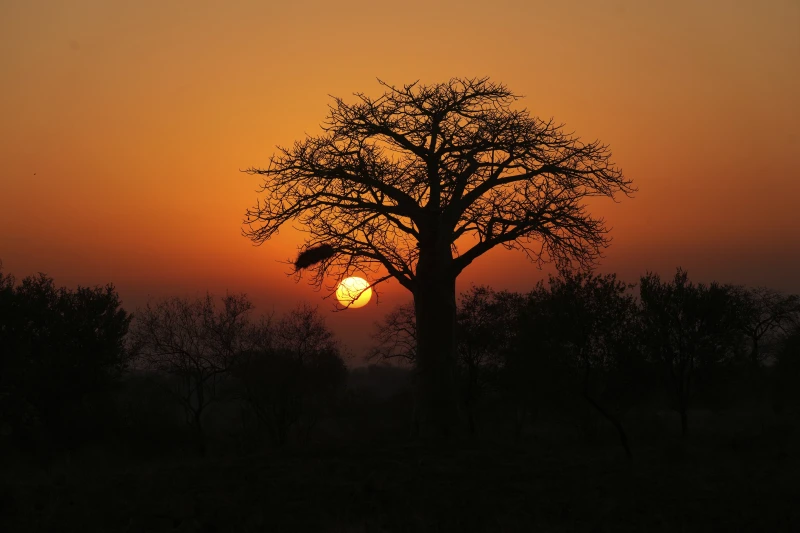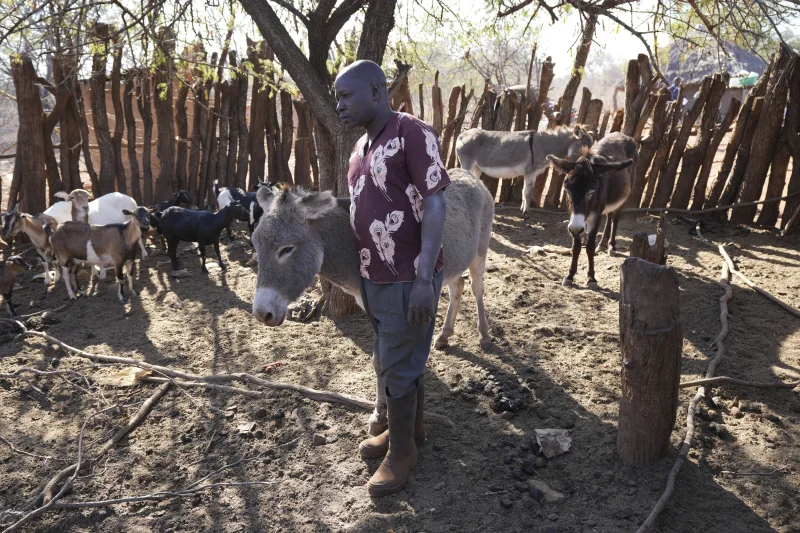The increasing tension between human populations and wildlife in Chiredzi, Zimbabwe, poses a significant challenge for both conservation efforts and rural livelihoods.
This region, which is affected by various environmental and socio-economic pressures, serves as a poignant case study that elucidates the broader issues of wildlife conservation, human encroachment, and sustainability.
The encounters faced by Tembanechako Mastick and his community reflect a tragic intersection where traditional livelihoods clash with the imperatives of wildlife conservation.
Tembanechako Mastick, a 47-year-old resident of Chiredzi, embodies the struggle between rural subsistence and the need for sustainable wildlife management.
Once a willing poacher, his transformation into a conservation advocate after spending time in jail illustrates the potential for change that lies within communities affected by wildlife conflict.
His experience is framed against a backdrop of increased human-wildlife encounters, which have escalated in recent years, exacerbated by drought, land reform policies, and changing agricultural practices.
As droughts become more frequent and severe, communities’ ability to sustain their traditional farming practices diminishes, leading many, like Mastick, to seek alternative means of survival through poaching.
Mastick’s recollection of a time when hunting was a staple for sustenance in his community highlights the changing dynamics of human interactions with wildlife.
Before the chaotic land reform program that began in 2000, rural communities in Zimbabwe maintained a delicate balance with their environment, often coexisting with wildlife while relying on it for meat.
However, as settlers encroached upon wildlife territories, this balance became increasingly threatened. The establishment of farming plots in areas like the Save Valley Conservancy contributed to habitat loss for many species, leading to a decline in wildlife populations and heightening the need for human populations to encroach further into these territories.
The adverse impacts of climate change, particularly droughts induced by El Niño, have led to a severe reduction in crop yields, such as corn and sorghum, prompting further distress within these communities.
As people grapple with hunger and poverty, the instinct to protect livestock becomes paramount, making them more vulnerable to conflict with wildlife, who are also seeking food resources.
The escalation in distress calls to the Zimbabwe National Parks and Wildlife Management Authority, which spiked to 3,000 to 4,000 annually, exemplifies this plight.
This figure starkly contrasts with a mere 900 calls in 2018, underscoring an urgent cry for help from communities struggling against encroaching wildlife.
Mastick’s transformation is bolstered by a program aimed at redirecting poachers toward conservation. His current perspective—that the benefits of wildlife extend beyond immediate personal gain to encompass community-wide advantages—marks an important shift in cultural understanding regarding wildlife conservation.
Mastick conveys that while individual poaching may provide temporary sustenance, the long-term benefits of preserving wildlife are exponentially greater, particularly in terms of ecotourism.
The notion that one’s actions can have ripple effects on their entire community is critical in fostering more sustainable interactions with wildlife.
The narratives surrounding traditional hunting must be reevaluated as communities face the harsh realities of dwindling resources and increasing wildlife encounters.
Advocacy for a conservation-minded approach often meets resistance from villagers who see immediate threats to their livelihoods. However, as Mastick imparts his newfound convictions to others, he emphasizes the communal benefits over individual gain, crafting a new social contract between humans and wildlife.
The challenges in Chiredzi highlight the pressing need for practical solutions to mitigate human-wildlife conflict. Traditional methods of keeping wildlife at bay, such as rudimentary fencing and loud noises, have proven inadequate against formidable animals like elephants and lions.
Inadequate fencing—often composed of makeshift materials—fails to deter larger wildlife, while cultural methods to scare animals away offer limited effectiveness.
Furthermore, the advancement of agriculture into wildlife territories compromises both biodiversity and food security.
To address these conflicts, stakeholders must engage in a multi-faceted approach that incorporates community education, adequate resourcing for park management agencies, and infrastructural investment.
Strengthening the relationships between local communities and conservation authorities is essential. Initiatives that focus on creating buffer zones, providing alternative livelihoods through sustainable practices, and promoting eco-tourism can alleviate pressures on wildlife while enhancing community resilience.
The long-term success of such interventions hinges on a collective understanding of wildlife’s value as a shared resource.
Financial incentives for conservation, such as community benefit-sharing models from tourism, could foster a deeper commitment among local populations to protect wildlife rather than view it merely as a threat.
The ongoing struggle for adequate grazing land for livestock has reached a critical juncture, with the repercussions extending far beyond the immediate agricultural concerns and touching upon broader environmental and social challenges.
As communities in the vicinity of the Save River confront severe resource scarcity, the shallow and sandy riverbed, once characterized by its potent flow, has become a pathway for illicit activities, notably the transportation of illegally logged timber by donkey-drawn carts from the conservancy.
This practice not only exacerbates the depletion of essential wildlife habitats but also reflects a desperate search for resources that are now increasingly contested between humans and wildlife.
Dingani Masuku, the community liaison manager for the Save Valley Conservancy, articulates a profound connection between these developments and the overarching impact of climate change, positioning the region as one of Zimbabwe’s most arid and adversely affected areas.
He poignantly notes, “All resources are scarce. So we have to compete (with animals) for those resources,” emphasizing the intensity of the competition for dwindling supplies between communities and wildlife.
In Chiredzi, a semi-arid district situated approximately 500 kilometers from Harare, this competition manifests acutely, as evidenced by the experiences of local residents such as Mastick, who is often called upon to mediate between enraged villagers and their frustrations arising from livestock losses due to wildlife predation.
With his personal livestock now severely diminished from 45 goats to a mere 10, Mastick bears not only the scars of violent encounters with predatory animals but also the weight of communal despair.
He recognizes that, in the absence of successful crop harvests, reliance on livestock becomes a crucial means of sustaining families, funding education, and procuring food.
Mastick, therefore, finds himself in the precarious position of advocating for harmony between human needs and wildlife preservation, a challenge underscored by his personal ordeal of incarceration, during which his family’s survival was threatened.

Drawing upon the lessons learned during that time, he has since honed skills in carpentry, establishing a workshop that not only generates income but serves as a nexus for skill-sharing and community empowerment.
Through active engagement in community forums and educational initiatives, he aspires to dismantle the cycle of poaching by demonstrating that alternative livelihoods can effectively substitute the short-term gains derived from illegal wildlife exploitation.
Masuku attests to the credibility that Mastick’s journey from poacher to carpenter affords him in the eyes of the community, illustrating that through transformation and resilience, it is indeed possible to cultivate a future where coexistence with nature prevails over conflict and depletion.
The situation in Chiredzi serves as a microcosm of a larger global challenge—the struggle to harmonize human needs with environmental conservation.
As the pressures of climate change, land reform policies, and traditional practices collide, communities must navigate the complexities of survival in a world increasingly influenced by ecological shifts.
The compelling narrative of Tembanechako Mastick exemplifies the potential for transformation and collaboration in reimagining the relationship between people and wildlife.
It is crucial that conservationists, policymakers, and local communities work together to develop strategies that not only protect wildlife but also empower people to thrive in harmony with their environment.
The road ahead may be fraught with challenges, yet the promise of a sustainable future lies within the collective strength of communities dedicated to finding balance in this age of conflict.
